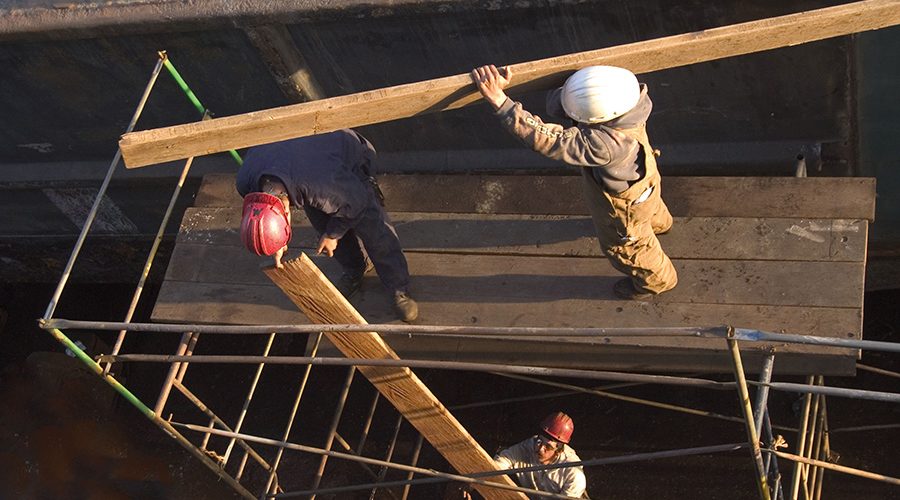A contractor is injured after falling off a scaffold. In legal terms, who is responsible? Adrian Rooney, Chair of the NASC Health and Safety Committee and Managing Director of Midland Scaffolding Services, advises.
NASC

Adrian Rooney is Chair of the NASC Health and Safety Committee and Managing Director of Midland Scaffolding Services.
Most people answering this question correctly apportion liability to the contractor’s employer and the scaffolding contractor; however, many respondents completely overlook another party that could be held to blame; the principal contractor or developer.
Worryingly, many principal contractors and developers are themselves unaware of their legal responsibilities under Work at Height Regulations 2005 – and the financial penalties they face for breaching this legislation.
In April 2018, a principal contractor received an eight-month sentence suspended for two years and was ordered to pay £5000 compensation and £2000 in costs after a self-employed worker fell from height and suffered life-threatening injuries.
Leeds Crown Court heard how the operative fell approximately 8m onto a paved floor, resulting in a traumatic brain injury, bruising and damage to his left arm.

An investigation by the Health and Safety Executive (HSE) found that scaffolding erected on the site did not extend fully across the intended area of works and did not provide a protective area along the ledge where the operative was working. The principal contractor failed to ensure suitable and sufficient measures were in place to prevent persons falling a distance liable to cause personal injury.
This case demonstrates the need for developers and principal contractors using scaffolds on their projects to be fully responsible for managing this equipment. HSE regulations state that they should check that anyone they appoint has the skills, knowledge, experience and, where relevant, the organisational capability to carry out their work safely and without risk to health.
But what does this mean in practice and how do those organisations protect themselves from the possibility of prosecution and potentially severe financial penalties?
The NASC would remind everyone with responsibility that scaffold inspections are undertaken weekly as required by the Work at Height Regulations 2005 and that all tradesman using the scaffolds are fully aware of how to work on the scaffold safely and have received appropriate training.
We also strongly recommend that their procurement process is robust. They should be able to demonstrate that the scaffolding contractor they appoint has the necessary competence and experience to erect and dismantle scaffolding safely with skilled operatives and can evidence that they are health and safety compliant.






